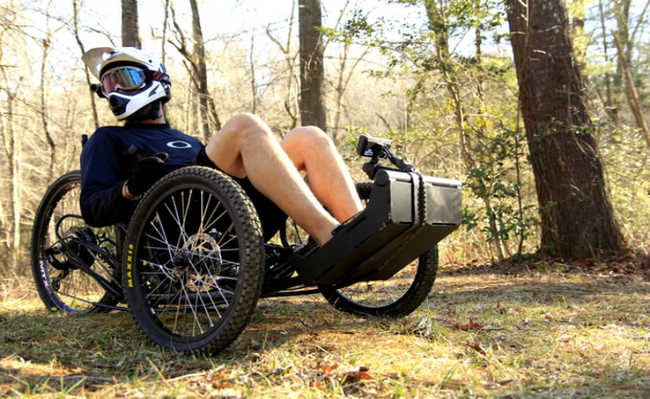What is carbon monoxide?
Carbon monoxide is an everyday gas that can be highly harmful

Gilles Tarabiscuité image by Pixabay
Whenever we hear about carbon monoxide , represented by the molecular formula CO , we quickly associate the gas with danger, pollution or intoxication. But how about a better understanding of what carbon monoxide is? Carbon monoxide is a colorless gas, odorless or tasteless, flammable and dangerous (since it is a chemical asphyxiant that can cause intoxication). Know your main emitting sources and learn how to avoid the risk of poisoning.
Carbon monoxide emitting sources
Carbon monoxide is released into the environment by natural or anthropogenic sources (human causes). Natural emitting sources can be: volcanic activity, electrical discharges and natural gas emission. However, anthropogenic emission sources are equivalent to approximately 60% of the carbon monoxide present in the troposphere. All of this is a product of incomplete combustion, that is, the burning of wood, charcoal and mineral; Gasoline; kerosene; diesel oil or gas when there is not enough oxygen to consume all these fuels.
Carbon monoxide can also originate from the photochemical oxidation of volatile organic compounds (VOCs) in the atmosphere or on the surface of water bodies. In the atmosphere, the compound can oxidize and form carbon dioxide; in surface waters, which become saturated with it, micro-organisms are able to use the compost as an energy source.
The most frequent emitting sources of carbon monoxide and which release the greatest concentration of gas into the atmosphere (millions of tons) are fires, which occur in forests all over the world, and the gas emitted from vehicle exhausts.
Use
Carbon monoxide is widely used industrially as a reducing agent, removing oxygen from some compounds, such as in the production of iron and other metals, and in the synthesis of various organic substances, such as acetic acid, formic acid, plastics, methanol and others . In World War II, it was used in gas chambers in concentration camps.
- Iron: importance and impacts of its extraction
carbon monoxide poisoning
According to some studies, the main route of exposure to carbon monoxide is respiratory. Acute poisonings can be fatal due to the affinity of the gas with the hemoglobin contained in the red blood cells, which carry oxygen (O2) to the tissues of all the organs of the body. The affinity of hemoglobin for carbon monoxide is up to 240 times greater than for O2.
Once inhaled, the gas is rapidly absorbed into the lungs, crossing the alveolar, capillary and placental membranes and, in circulation, it binds stably with hemoglobin. Intoxication in humans occurs when carbon monoxide competes with oxygen through hemoglobin, reducing the release of oxygen fixed under the hemoglobin, thus preventing transport and decreasing the amount of oxygen available in tissues, leading to death by suffocation.
Effects
The existence of chronic carbon monoxide poisoning resulting from prolonged exposure to low concentrations can cause cumulative toxic effects, such as insomnia, headache, fatigue, decreased physical, learning and work capacity, dizziness, vertigo, nausea, vomiting, disorders visual, hearing changes, respiratory diseases, anorexia, Parkinson's disease, cardiac ischemia, heart disease and atherosclerosis. In the elderly, it causes an increase in mortality from acute infarction.
Symptoms of mild carbon monoxide poisoning include fainting, feeling confused, headache, dizziness, and flu-like symptoms.
Long exposures can lead to severe poisoning in the central nervous system, heart and even death. The sequelae of acute intoxication are almost always permanent.
- Insomnia: what is it, teas, remedies, causes and how to end insomnia
Air quality
The national air quality standards were established in 1976 by the Brazilian Environment Institute (Ibama) and approved by the National Environment Council (Conama). In April 2013, Decree No. 51113 was published, which has stricter air quality parameters.
In the case of carbon monoxide, the state standard reaches 9 ppm for a sampling time of 8 hours. As for the air quality index adopted by Cetesb - Environmental Sanitation Technology Company, the qualification of CO in the air for 8 hours of sampling is:- Good quality: 9 ppm,
- Moderate quality: 9 to 11 ppm;
- Poor quality: 11 to 13 ppm;
- Very poor quality: 13 to 15 ppm;
- Terrible quality: over 15 ppm.
- What is air pollution? Know causes and types
It is important to keep an eye on this air quality index, especially in winter and if we have children, elderly people or people with heart problems at home, as a high level of carbon monoxide in the air can be more harmful for these groups of people.
How to avoid intoxication
The high level of carbon monoxide in the air can be harmful to our health and we must control the sources of gas we have in our homes, as they also have the potential for poisoning, such as non-ventilated gas or kerosene heaters, furnaces, ovens wood burning, gas ovens, fireplaces and car exhaust. We can avoid these sources of intoxication with a few suggestions:
- Ensure that all equipment in your home is installed and working properly;
- Take care to inspect and clean the furnace, chimneys and pipes each year;
- If you are going to use a fireplace, make sure the pipes and chimney are open;
- Do not heat the house with gas equipment;
- Ensure that the oven and furnace ventilate to the outside and that there are no leaks in the exhaust systems;
- Do not burn coal in any enclosed space;
- Do not leave a gas-powered tool running or a vehicle running inside the garage, workshop or any enclosed space;
- Never use gas shower heaters in unventilated bathrooms;
- Use hoods when cooking - understand why in the article "The danger lives at home: substances emitted during the act of cooking can harm your health");
- Place plants that purify the air in your home or workplace;
- Improve air quality with small day-to-day care - see how in the article "Troubleshooting indoors";
- Do not exercise in big cities during peak hours.










